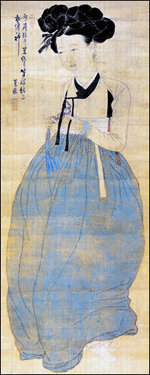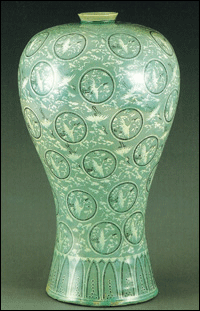 Cultural relics represent a nation’s rise and fall. Countries whose relics were looted in the past have tried to reclaim them to restore their cultural identity. Korea was one such country that suffered cultural pillage during the Japanese colonial era (1910-1945).
Cultural relics represent a nation’s rise and fall. Countries whose relics were looted in the past have tried to reclaim them to restore their cultural identity. Korea was one such country that suffered cultural pillage during the Japanese colonial era (1910-1945).
Jeon Hyeong-pil (1906-1962), the founder of the Kangsong Art Museum in Seoul, was an individual collector who devoted his life and fortune to buy the nation’s antiques back.
His contribution to the preservation of national treasures is revisited in a new book “Kansong Jeon Hyeong-pil” written by Lee Chung-ryeol. The author researched documents related to Jeon for 10 years and earned his family’s approval to publish the first biographical book on him.
Every spring and fall, hundreds of thousand visitors do not mind waiting for hours to see the rare antique exhibition at the museum nestled in a tranquil neighborhood in Seongbuk-dong, central Seoul.
The museum is home to a number of rare National Treasures ― from old paintings to Buddhist sculptures ― all collected by Jeon.
The Kansong Art Museum was the first modern private museum opened in Korea in 1938, in the middle of the colonial period. The museum was named after the penname of its founder, which means a “pine tree standing in the clean streams.”
The book explores how Jeon collected cultural artifacts across the nation and Japan during the colonial era.
Born in 1906 in Jongno, central Seoul, Jeon was a son of one of the wealthiest families in the country who owned vast rice paddies at that time. From his time in high-school, he read and collected many old books before studying law at Waseda University in Japan.
His love for national relics was fueled by the help of connoisseur and calligrapher Oh Se-chang (1864-1953). Under Oh’s guidance, Jeon bought historical relics ranging from Goryeo porcelain to old paintings and Buddhist statues worth many billions of won.
One of his most impressive purchases was a Goryeo celadon vase masterfully patterned with cranes for the recording-breaking price equal to the value of 20 houses at the time.
When his father passed away, Jeon at 24 became one of the 40 richest people in the nation, owning lands that spanned 8 million pyeong nationwide.
The young man initially pondered on how he could manage these enormous assets, and then decided to work to prevent Japan’s removal of Korean cultural properties during the colonial period.
He had a firm philosophy about such antiques ― the old paintings and writings ― which he called the “pride of the nation.”
Even at that time, collecting priceless antiques was popular among some wealthy people but mostly as a “noble” hobby. However, Jeon gathered not only famous antiques but also unappreciated historical items to show the whole development process of the country’s ancient culture.
“The paintings and writings were not always good. Sometimes, Joseon artists mimicked Chinese style, and at other times they created their own style during the eras of the kings, Yeongjo and Jeongjo.
Only collecting the masterful works cannot show the full spectrum of the 500-year-old Joseon culture,” Jeon said.
He was interested in Joseon painter Jeong Seon whose early works were less appreciated at that time but he noticed a high caliber and originality in his true-view landscape paintings. He amassed 161 paintings of the artist, 40 more than the National Museum of Korea presently has.
One day, Jeon was offered the chance to buy “Mongyudowondo,” the oldest Joseon-era painting, by Ahn Gyeon at the highest price ever and it was no doubt that the opportunity should not have been missed.
Jeon was eager to buy the painting but he couldn’t raise the money as he was in the three-year mourning period for his father’s death that banned any selling of inherited assets, according to family tradition.
The painting was from 1447 when Prince Ahnpyeong told the famous artist about his mysterious dream of paradise. The prince asked Ahn Gyeon to create a painting based on the dream. The work eventually belonged to the central library of Japan’s Tenri University. The failure to buy the painting left a deep scar on Jeon.
He also bought back painter Shin Yun-bok’s picture book from a Japanese collector and 20 pieces of Goryeo celadon worth 120 billion won from a British lawyer. Among others, he had a particularly special attachment to “Hunminjeongeum Haerye” (commentary on the original promulgation of the Korean alphabet) when the Japanese colonial government suppressed using “hangeul,” which was unveiled to the public at the museum only after Korea’s liberation.

Jeon sold much of his assets to buy cultural heritages in his youth and financed the high school he took over, while suffering financial difficulties to operate it, but he never sold his collection, which was placed in Bohwagak, now the Kangsong Art Museum.
The museum was open to the public only after the liberation. However, the outbreak of the Korean War (1950-53) once again frustrated his efforts to conserve the assets.
Many of the artifacts and documents were scattered around the nation although important ones were saved by him in advance. Jeon passed away in 1962 at the age of 57 and his museum Bohwagak changed its name into the Kansong Art Museum in 1966.
The museum only opens its doors to the public for two weeks in May and October. The Kansong Art Museum’s collections are highly regarded for their higher artistic caliber and quality, more than any other museums in the nation.
Author : Chung Ah-young
Source : http://www.koreatimes.co.kr




